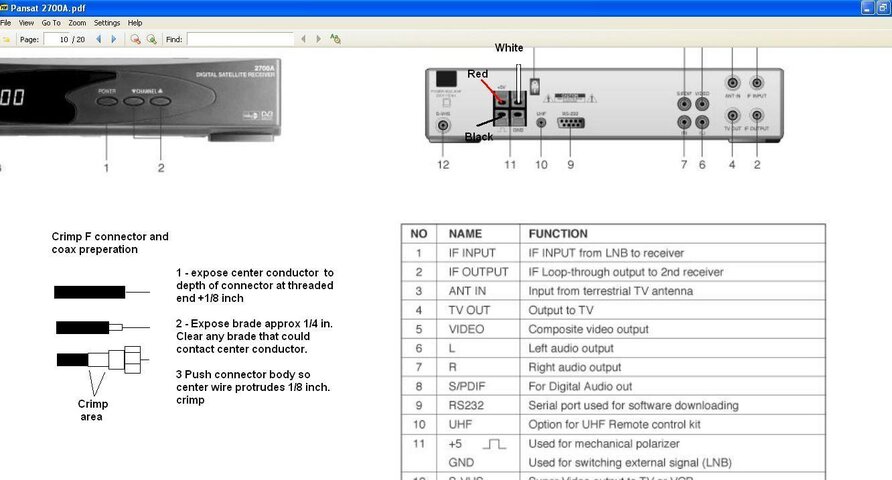I think you are very close with the focal legnth - more later on this -
Some LNB's like to have 18 to 24 volts powering them, Seems many 80'sand 90's vintage ones are really sensitive to this.
Here's how we will check, While you're on G12 with the analog and digital signal. What is the analog picture like, Lots of sparkles, few or None? If there is a signal meter on the analog, make note of a reading. And on The Pansat, Note the Q reading. (also- do you get a good lock- good solid picture, pixillated or freezes?
Now switch the coax/s to the inputs of the FTA and Uniden, and see if there is a discernible improvement in the analog picture. and on the Pansat, did Q improve?
If your LNB is voltage sensitive, we should have gotten a marked improvement.
(Let's see- 120*120/16*24.12=37.31-- inches. Your very close. To be closer, check how much of the feed is sticking out past the front of the scalar. The 37.13 inches should be 1/4 inch inside the throat of the feed. I'm sure this is fine, but I have to ask, Is the ribbed side of the scalar towards the dish?
Both of my Pansats Q and S reading would jump all over the place while I adjusted the polarotor (servo) skew. Would usually have to wait a few seconds for it to stabilize.Longer with the 9200.
Some LNB's like to have 18 to 24 volts powering them, Seems many 80'sand 90's vintage ones are really sensitive to this.
Here's how we will check, While you're on G12 with the analog and digital signal. What is the analog picture like, Lots of sparkles, few or None? If there is a signal meter on the analog, make note of a reading. And on The Pansat, Note the Q reading. (also- do you get a good lock- good solid picture, pixillated or freezes?
Now switch the coax/s to the inputs of the FTA and Uniden, and see if there is a discernible improvement in the analog picture. and on the Pansat, did Q improve?
If your LNB is voltage sensitive, we should have gotten a marked improvement.
(Let's see- 120*120/16*24.12=37.31-- inches. Your very close. To be closer, check how much of the feed is sticking out past the front of the scalar. The 37.13 inches should be 1/4 inch inside the throat of the feed. I'm sure this is fine, but I have to ask, Is the ribbed side of the scalar towards the dish?
Both of my Pansats Q and S reading would jump all over the place while I adjusted the polarotor (servo) skew. Would usually have to wait a few seconds for it to stabilize.Longer with the 9200.



